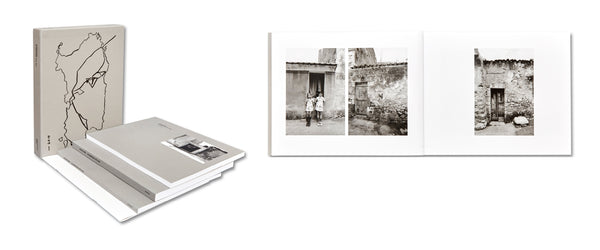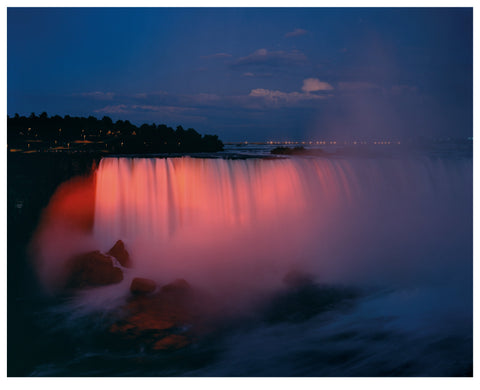 In response to all my questions about his honeymoon in Sardinia, Guido told me I should also talk to Maurizio Preda. I therefore found out that there were actually three of them on the trip. Guido and his wife were accompanied by one of the close friends with whom he and Marta shared a house during his years studying architecture at university in Venice before they were married. So I called Maurizio to hear his account of the young photographer Guido in Sardinia. Talking to him was like opening a treasure chest of precious memories and anecdotes told with the enthusiasm of someone who gets excited about the great friendship of a lifetime, as if Guido were as dear to him as a brother.
In response to all my questions about his honeymoon in Sardinia, Guido told me I should also talk to Maurizio Preda. I therefore found out that there were actually three of them on the trip. Guido and his wife were accompanied by one of the close friends with whom he and Marta shared a house during his years studying architecture at university in Venice before they were married. So I called Maurizio to hear his account of the young photographer Guido in Sardinia. Talking to him was like opening a treasure chest of precious memories and anecdotes told with the enthusiasm of someone who gets excited about the great friendship of a lifetime, as if Guido were as dear to him as a brother.
The first anecdote paints a perfect portrait of the young Guido and his extreme shyness, which became proverbial among his friends. Maurizio hosted Guido’s darkroom in his bedroom for years and he recalls how after graduating Guido worked as a temporary technician in the photography laboratory for the urban planning course, in the Faculty of Architecture located in Preganziol (in the province of Treviso). All Guido’s friends anxiously awaited the day when the famous urban planning professor Giovanni Asteno would meet Guido to confirm his position and make him an official employee. Getting this job meant everything to Guido. He depended on the salary to enable him to carry on living in Venice with his friends, and to embark upon his career as a photographer. It seems that before this fateful meeting, his friends had tutored Guido on how to speak firmly to the professor to convince him to hire him. Finally the day of the interview arrived. His friends anxiously awaited Guido’s return home and, when they asked him: ‘How did it go?’, ‘What did you say?’, he replied: ‘Nothing, but in a particular way!’ When commenting on this episode, Maurizio explains with irony: ‘This is the visible and invisible aspect of Guido, who is very good at saying everything without words. He expresses himself in other dimensions’. He then recalled the never-ending photographic experiments, the solarising of images, the lemon juice used to transform black-and-white into fluorescent colours, as he followed in the footsteps of the pioneers of photography. Guido seemed to follow Eugène Atget’s work on the streets of Paris in the early twentieth century, with his heavy bellows camera, and his tireless effort to reproduce the invisible or, better still, that which remains unseen despite being before our eyes. Living with Guido was like living with an alchemist. Next to the bed, where he printed the photographs, there were various cardboard masks with small holes in them through which he directed the light onto certain points of the print, and microscopic shapes that he used to partially obscure it.
When commenting on this episode, Maurizio explains with irony: ‘This is the visible and invisible aspect of Guido, who is very good at saying everything without words. He expresses himself in other dimensions’. He then recalled the never-ending photographic experiments, the solarising of images, the lemon juice used to transform black-and-white into fluorescent colours, as he followed in the footsteps of the pioneers of photography. Guido seemed to follow Eugène Atget’s work on the streets of Paris in the early twentieth century, with his heavy bellows camera, and his tireless effort to reproduce the invisible or, better still, that which remains unseen despite being before our eyes. Living with Guido was like living with an alchemist. Next to the bed, where he printed the photographs, there were various cardboard masks with small holes in them through which he directed the light onto certain points of the print, and microscopic shapes that he used to partially obscure it. ‘Guido was already ahead of the rest. While we, his photography-loving friends, focused on portraiture, Guido immortalised bollards, the backs of flaking houses, old gates. He adopted a stubbornly different approach and we were never able to understand it fully. Despite being penniless, Guido managed to have photography books sent to him from all over the world. I remember parcels arriving from Japan, from the United States’.Between one anecdote and the next, our conversation reached the day of departure for Sardinia. Guido and Marta married on the morning of 25 May. Although Maurizio was supposed to be the best man, he wasn’t actually at the wedding because his train was late. ‘Guido wore tennis shoes on the day. He was the only one who wore them to formal occasions at the time’. Maurizio eventually joined them at Guido’s parents’ home in Ronta, a small district of Cesena, in Emilia Romagna. There they loaded up a Fiat 127 with crates of peaches and apricots to eat on their journey and headed for Civitavecchia, to catch the ferry to Olbia.
‘Guido was already ahead of the rest. While we, his photography-loving friends, focused on portraiture, Guido immortalised bollards, the backs of flaking houses, old gates. He adopted a stubbornly different approach and we were never able to understand it fully. Despite being penniless, Guido managed to have photography books sent to him from all over the world. I remember parcels arriving from Japan, from the United States’.Between one anecdote and the next, our conversation reached the day of departure for Sardinia. Guido and Marta married on the morning of 25 May. Although Maurizio was supposed to be the best man, he wasn’t actually at the wedding because his train was late. ‘Guido wore tennis shoes on the day. He was the only one who wore them to formal occasions at the time’. Maurizio eventually joined them at Guido’s parents’ home in Ronta, a small district of Cesena, in Emilia Romagna. There they loaded up a Fiat 127 with crates of peaches and apricots to eat on their journey and headed for Civitavecchia, to catch the ferry to Olbia.
‘Although we had to travel on the cheap, our trip was full of joy and constant discoveries’, recalled Maurizio as he told of the ship’s arrival in Golfo Aranci and Golfo di Marinella just as the sun was rising. Guido was at the wheel, Maurizio in the passenger seat with a map, and Marta on the back seat. At night Guido and Marta put the seats down and slept in the car, while Maurizio slept outdoors, on a type of camp bed.In the run-up to their trip they had thought a lot about Sardinia, seeing it as a place full of adventure. When looking at maps, they were impressed by the lofty and mysterious-sounding place names: Tempio Pausania, Arzachena, Orgosolo, Carloforte, the island of Maddalena. As Guido spent his time photographing external doors, bushes and stones, the strength of this land and its people won over the hearts of the three travellers.
Guido was at the wheel, Maurizio in the passenger seat with a map, and Marta on the back seat. At night Guido and Marta put the seats down and slept in the car, while Maurizio slept outdoors, on a type of camp bed.In the run-up to their trip they had thought a lot about Sardinia, seeing it as a place full of adventure. When looking at maps, they were impressed by the lofty and mysterious-sounding place names: Tempio Pausania, Arzachena, Orgosolo, Carloforte, the island of Maddalena. As Guido spent his time photographing external doors, bushes and stones, the strength of this land and its people won over the hearts of the three travellers.
‘My role’, continues Maurizio, ‘was fundamental to Guido’s work. I had to break the ice with the local people so that he could take photographs freely. You need to remember that, coming from northern Italy, the Sardinians saw us as “continental”. Mass tourism didn’t exist back then and we must have looked like intrusive aliens as we walked around the houses with our cameras. So I was in charge of public relations. I had to make sure the locals saw us as harmless foreigners. Guido’s ability to take photographs in complete freedom depended on my introduction. That journey made a deep impression on me. I felt like one of Ulysses’ companions on the Odyssey, a continual merry journey of discovery of incredible villages, inns and characters. I still remember the encounter with a very elderly man who looked like Socrates sitting on a chair in the sun. After starting up a conversation with him, he told us about the problem of the ‘steak’. He meant that young people firstly have to resolve all the tangible aspects of existence, finding a way to earn their living, a ‘steak’ to be precise, before they can get involved in art. When we got back to Venice, we sent this wise old man a letter with the photograph Guido had taken of him. There is an episode forming part of my affective memory behind each photograph’.
The three travellers went with the flow of encounters with people and places when choosing which road to follow. When talking about how they followed an itinerary without a set destination, created day by day on a whim, Maurizio cited a verse from the poem by Robert Frost: ‘Two roads diverged in a wood, and I / I took the one less travelled by / And that has made all the difference’.
Excerpt from 'All the Difference ' by Irina Zucca Alessandrelli, from In Sardegna by Guido Guidi, published in June 2019.

3 paperback volumes housed in a slipcase
30 x 24 cm, 424 pages
€70 £60 $80





